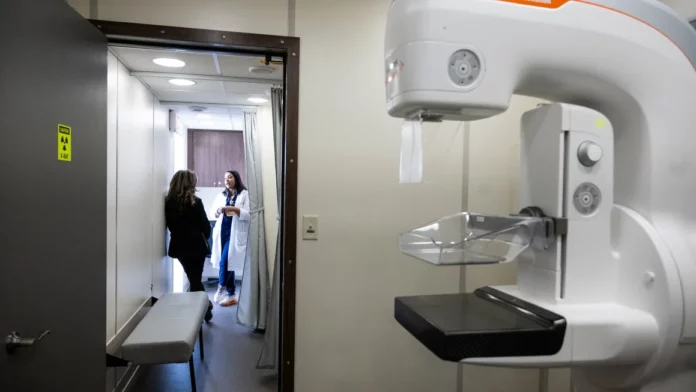New guidelines from the US Preventive Services Task Force advise women to undergo mammograms every other year from the age of 40 to 74. This replaces the previous recommendation of starting biennial screenings at age 50, with the decision to screen in the 40s left to individual discretion. The updated advice, published in JAMA, extends to all individuals assigned female at birth, including cisgender women, transgender men, and nonbinary individuals at average risk of breast cancer. Those with a family history or dense breasts are also included.
However, individuals with a personal history of breast cancer, genetic markers like BRCA1 or BRCA2, a history of high-dose radiation therapy, or high-risk breast lesions should follow their physician’s plan or consult them for personalized advice. Dr. Wanda Nicholson, Chair of the USPSTF, emphasized that starting screenings at 40 and continuing until 74 can significantly reduce breast cancer deaths, as early detection enhances survival rates.
Breast cancer ranks second in women’s cancer incidence and mortality in the US, making early detection crucial. The updated strategy could potentially save up to nearly 20% more lives, underscoring the importance of regular mammograms for women’s health.
Why not screen every year?
Around 1 in 8 women are expected to develop invasive breast cancer in their lifetime, according to the American Cancer Society, making mammography the primary tool for screening and detection. However, the US Preventive Services Task Force (USPSTF) has faced criticism for recommending biennial screenings instead of annual ones.
Dr. Wendie Berg from the University of Pittsburgh School of Medicine argues that annual screenings are equally efficient and yield greater reductions in late-stage disease and breast cancer-related deaths. She emphasizes the importance of annual mammograms, especially for premenopausal women and those from racial or ethnic minority groups.
However, concerns extend beyond screening frequency. Molly Guthrie from Susan G. Komen notes that the USPSTF’s recommendations fail to address individual risk factors such as family history or breast density. With half of women over 40 having dense breast tissue, personalized screening strategies are essential.
Experts advocate for tailored approaches based on personal and family medical histories. Guthrie stresses the importance of discussions between women and their healthcare providers to determine the most suitable screening regimen.
Despite the USPSTF’s shift towards recommending screening at age 40, some organizations, like the American Cancer Society and the American College of Obstetricians and Gynecologists, suggest earlier and more frequent screenings for certain age groups. While acknowledging the significance of the USPSTF’s update, Dr. Karen Knudsen from the American Cancer Society expresses disappointment that it doesn’t extend screening recommendations to women over 74, emphasizing the ongoing need for vigilant screening as women age.
Benefits and harms of screening
In order to inform the latest screening recommendations, members of the task force thoroughly analyzed data from seven randomized clinical trials, 13 nonrandomized studies, and a new modeling study.
“We assessed the balance of benefits and potential harms related to interval screening and the appropriate age to commence screening,” Nicholson explained.
The USPSTF concluded that biennial breast cancer screening for women aged 40 to 74 reduces the risk of breast cancer mortality. However, there wasn’t enough evidence to determine the balance of benefits and harms for screening women aged 75 and older. Additionally, there was insufficient evidence to evaluate the benefits and harms of supplemental screening for women with dense breasts.
The updated recommendation now includes both traditional digital mammography and digital breast tomosynthesis, commonly known as “3D mammography,” as effective screening methods.
Nicholson emphasized that the USPSTF reviews its recommendations every five years, considering updates or reaffirmations based on new evidence.
Regarding the new recommendations, the USPSTF uncovered “clear evidence” showing a yearly 2% increase in invasive breast cancer diagnoses among women aged 40 to 49. This data, including information on Black women for the first time, revealed that Black women are nearly 40% more likely to die from breast cancer compared to White women.
Acknowledging these disparities, the task force called for rigorous research to understand the underlying causes and to find ways to address them within the healthcare system. Additionally, more studies are needed to determine the best screening intervals for Black women.
Dr. Joann Elmore and Dr. Christoph Lee underscored in a joint editorial that the revised recommendations highlight the need to address health disparities in breast cancer and ensure equitable access to screening technologies. They emphasized the importance of ensuring that women, particularly those from underserved communities, have access to up-to-date screening facilities, prompt diagnostic evaluations, and high-quality treatment options aligned with their preferences.
